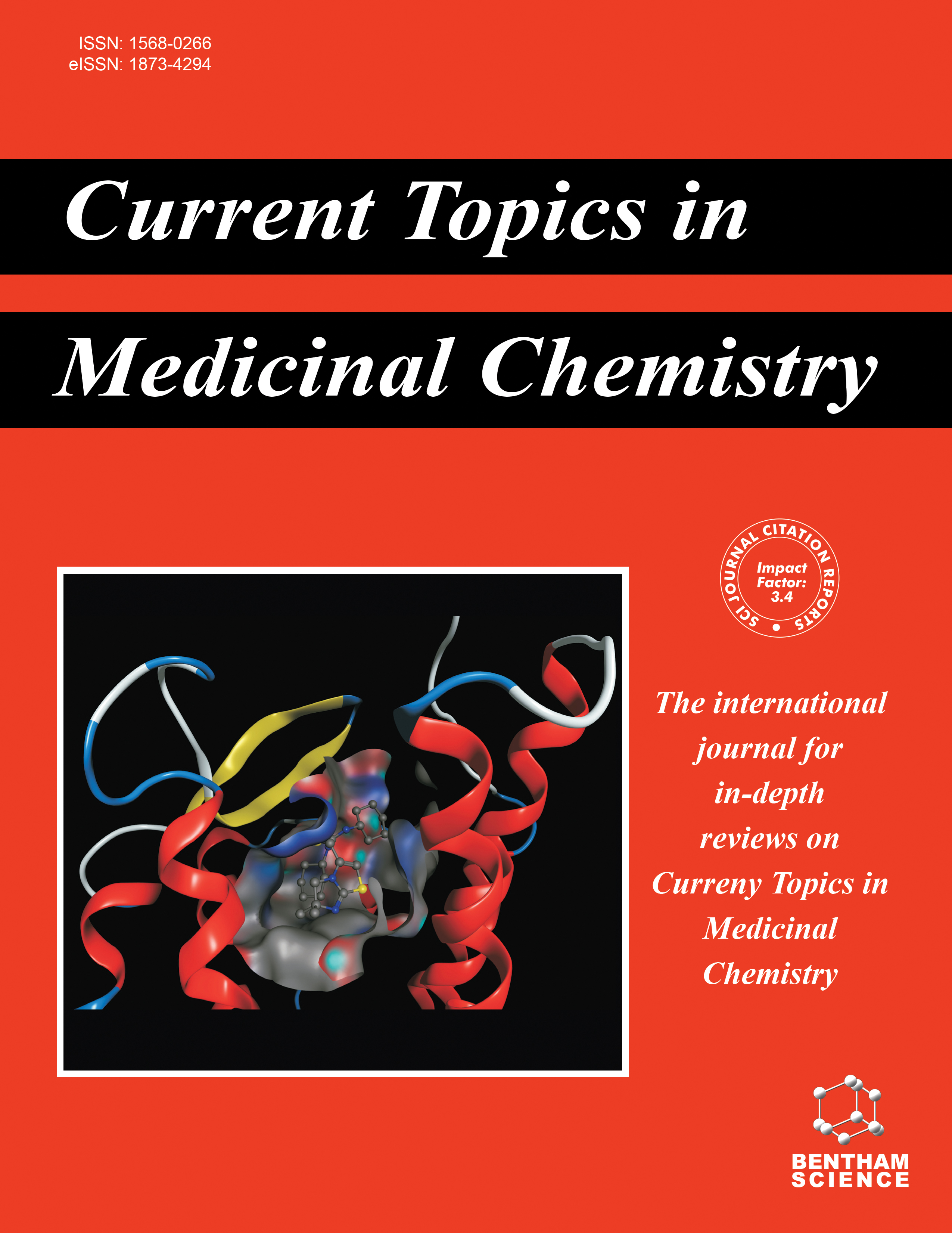- Home
- A-Z Publications
- Current Topics in Medicinal Chemistry
- Previous Issues
- Volume 11, Issue 10, 2011
Current Topics in Medicinal Chemistry - Volume 11, Issue 10, 2011
Volume 11, Issue 10, 2011
-
-
Editorial [Hot Topic: Progress in Neglected Disease Drug Discovery (Guest Editors: Andrew L. Hopkins & Paul G. Wyatt)]
More LessAuthors: Andrew L. Hopkins and Paul G. WyattHalf the disease burden of the developing world - 80% of the world's population - is due to infectious diseases, with one billion people suffering from a neglected tropical disease. Constant vigilance is needed against ancient killers such as malaria and tuberculosis as new drugs can lose their effect quickly due to the spread of drug resistance. Yet despite these levels of disease burden, between 1975 and 1999 only thirteen new drug Read More
-
-
-
Lessons from Seven Decades of Antituberculosis Drug Discovery
More LessDespite massive global efforts tuberculosis rates continue to climb and drug-resistance rates are rising to alarming levels. Discovering new agents for treating this bacterial pathogen poses unique challenges, but these challenges have been faced throughout the entire modern history of research into anti-infectives. This review looks back at every decade since the 1940s and summarizes the most important drugs develop Read More
-
-
-
The State of the Art in Anti-Malarial Drug Discovery and Development
More LessAuthors: Jeremy N. Burrows, Kelly Chibale and Timothy N.C. WellsMalaria is one of the most prevalent and devastating infectious diseases of our time. Yet, unfortunately, apart from artemisinin combination therapies there are relatively few effective treatments for Plasmodium falciparum and only one treatment for the radical cure of Plasmodium vivax. Novel classes of antimalarial medicines are urgently needed given the long-term inevitability of resistance to current therapies an Read More
-
-
-
State of the Art in African Trypanosome Drug Discovery
More LessAuthors: Robert T. Jacobs, Bakela Nare and Margaret A. PhillipsAfrican sleeping sickness is endemic in sub-Saharan Africa where the WHO estimates that 60 million people are at risk for the disease. Human African trypanosomiasis (HAT) is 100% fatal if untreated and the current drug therapies have significant limitations due to toxicity and difficult treatment regimes. No new chemical agents have been approved since eflornithine in 1990. The pentamidine analog DB289, which was Read More
-
-
-
Target Validation: Linking Target and Chemical Properties to Desired Product Profile
More LessAuthors: Paul G. Wyatt, Ian H. Gilbert, Kevin D. Read and Alan H. FairlambThe discovery of drugs is a lengthy, high-risk and expensive business taking at least 12 years and is estimated to cost upwards of US$800 million for each drug to be successfully approved for clinical use. Much of this cost is driven by the late phase clinical trials and therefore the ability to terminate early those projects destined to fail is paramount to prevent unwanted costs and wasted effort. Although neglected diseases d Read More
-
-
-
Finding New Hits in Neglected Disease Projects: Target or Phenotypic Based Screening?
More LessAuthors: Ian H. Gilbert, Didier Leroy and Julie A. FrearsonIn this article, we discuss the merits of both target-based and phenotypic screening strategies to find starting points for drug discovery projects in neglected tropical disease including: human African trypanosomiasis, Chagas disease, leishmaniasis and malaria. Technological advances now mean that it is possible to undertake high quality screens against isolated molecular targets at considerable scale. However target select Read More
-
-
-
Rapid Analysis of Pharmacology for Infectious Diseases
More LessPandemic, epidemic and endemic infectious diseases are united by a common problem: how do we rapidly and cost-effectively identify potential pharmacological interventions to treat infections? Given the large number of emerging and neglected infectious diseases and the fact that they disproportionately afflict the poorest members of the global society, new ways of thinking are required to develop high productivity disc Read More
-
Volumes & issues
-
Volume 25 (2025)
-
Volume 24 (2024)
-
Volume 23 (2023)
-
Volume 22 (2022)
-
Volume 21 (2021)
-
Volume 20 (2020)
-
Volume 19 (2019)
-
Volume 18 (2018)
-
Volume 17 (2017)
-
Volume 16 (2016)
-
Volume 15 (2015)
-
Volume 14 (2014)
-
Volume 13 (2013)
-
Volume 12 (2012)
-
Volume 11 (2011)
-
Volume 10 (2010)
-
Volume 9 (2009)
-
Volume 8 (2008)
-
Volume 7 (2007)
-
Volume 6 (2006)
-
Volume 5 (2005)
-
Volume 4 (2004)
-
Volume 3 (2003)
-
Volume 2 (2002)
-
Volume 1 (2001)
Most Read This Month
Article
content/journals/ctmc
Journal
10
5
false
en


